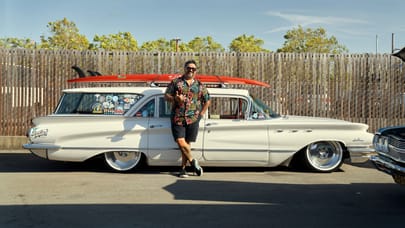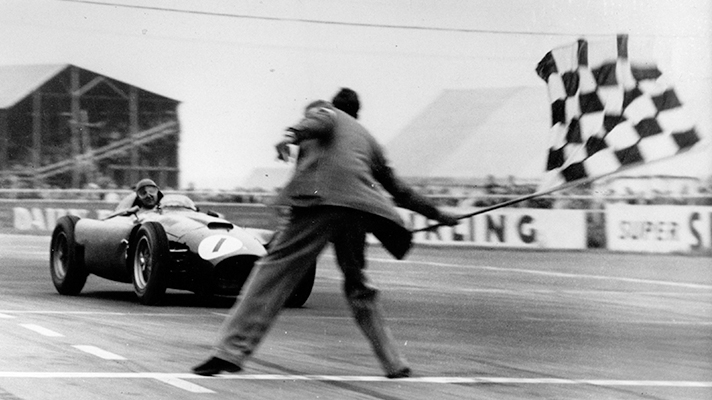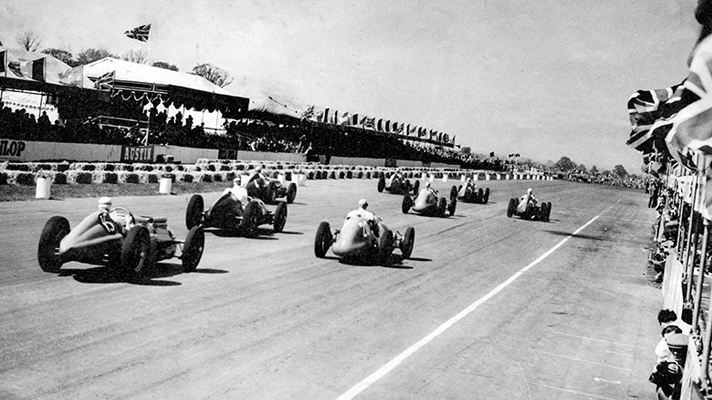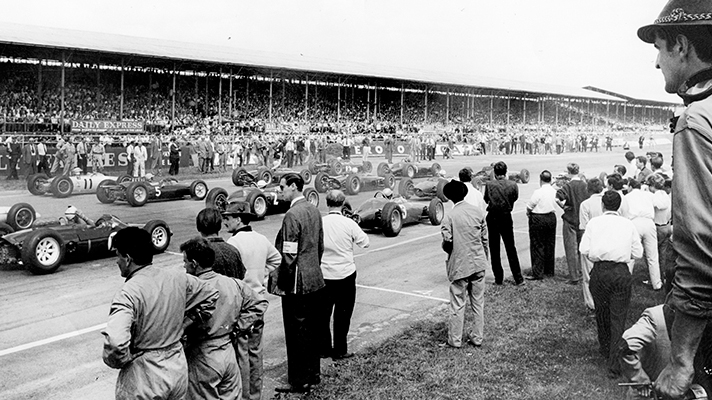
The history of Silverstone circuit
Maggots. It's the first sweeping chicane at Silverstone and, disappointingly, does not relate to a challenging infestation of medieval larvae. Rather, the screamingly pleasant Maggots Moor, which is next to the village of Whittlebury, just to the north-east of the circuit.
It's one of the quintessentially odd names given to each of the kinks and ruffles that make up the circuit, which began life - as many did - as an airstrip, left rotting at the end of World War II. But, like most British institutions, the legendary circuit wasn't conceived in a moment of careless serendipity - it was the result of meticulous planning and painstaking negotiations.
See, the Royal Automobile Club wanted to bring back international motor racing to the UK after the war effort, and chose the Northamptonshire site in 1948 because it was slap-bang in the middle of England. Accessible for many, fed by a decent road network, plenty of room for spectators, and the result of lengthy, difficult talks with legislators.
But rewind a couple of years - before the short-back-and-sides bods chipped in - there were people racing on the site. And they were the filament in the lightbulb whose bright idea lit up Britain's motorsport renaissance.
Once peace was declared, the Rootes Group - manufacturers of Hillman and Sunbeam cars, among others - stored vehicles bound for export there. It was an enormous site when it was active, and the base for No. 17 Operational Training Unit (using the Vickers Wellington bomber) was home to more than 2,000 personnel before closing in 1946.
Something noted by a petrolhead called Maurice Geoghegan. He gathered up a group of his car-fond mates, and asked the site manager if he could use the perimeter roads and runways to test a Frazer Nash he'd built, reasoning that as it was already used for an automotive application, it wouldn't be too difficult to get a thumbs up.
Which it wasn't. He sketched out a faintly triangular two-mile route from the current Club Corner anticlockwise down a perimeter road to Stowe, around to Becketts, and up one of the runways back to Club. After a few stabs at testing on Geoghegan's homespun track, the Frazer Nash club thought it'd be nice to put on a proper race. So, in September 1947, 11 cars gathered on the dispersal point at Maggots.
After several laps, Geoghegan and another driver, Peter Douglas Osborn, were jostling around Club when a rogue sheep wandered onto the track. The impact tore off one car's front axle, and the sheep's mortal coil. After the local farmer was reimbursed for his loss, the inaugural race at Silverstone was over, sensitively named ‘The Mutton Grand Prix'. Neither its length nor its victor was recorded.
Spurred by the Frazer Nash club, and a huge surge in interest for motorsport, more amateur racers cottoned on to Silverstone. The Bentley Drivers Club, for one, and even pupils from the local Stowe School. Legend has it that they'd tip the Rootes Group storage security guard and take the new cars there out for a spin on the track.
But it was all under the radar - nods and gentlemen's agreements. What the people wanted, and the country needed, was a proper circuit. There were hill climbs at Shelsley Walsh and Prescott, and speed trials on the seafront in Brighton and Poole. But nothing track-based for the public to enjoy, like the street races on the continent.
Top Gear
Newsletter
Thank you for subscribing to our newsletter. Look out for your regular round-up of news, reviews and offers in your inbox.
Get all the latest news, reviews and exclusives, direct to your inbox.
So the Royal Automobile Club started knocking on the Air Ministry's door in 1946 to arrange a proper venue. It was a fight, but on 30 June 1948 the club's chairman, Wilfred Andrews, announced that it had secured a one-year lease on the Silverstone site. He announced that the first International Grand Prix would take place there on 2 October that year.
Andrews recruited Jimmy Brown, an ex-RAF pilot, to prepare the circuit (the centre of which was still being used to grow crops), which he promptly did: 170 tonnes of straw bales, 10 miles of signal wiring and 620 marshals were needed to get it ready for race day.
While its title was downgraded by the FIA from the British Grand Prix to the RAC Grand Prix (the purse wasn't sufficient and so failed to entice many international teams), proper racing at Silverstone was born. This first event attracted 100,000 spectators, twice as many as had ever been recorded at a race meeting (all separated from the action by hope and a rope), and drivers on the grid included 19-year-old Stirling Moss, racing in the 500cc National.
While the concrete was still setting on the bridge across the circuit, Luigi Villoresi went on to win the inaugural RAC GP driving his Maserati 4CLT/48, followed by his teammate and pupil, Alberto Ascari, who arrived in the same car 42 seconds later. The former averaged 72.8mph and set a lap record of 76.82mph. In third place was Bob Gerard in a pre-war ERA.
It wasn't perfect - the track was militantly flat, and not as handsome as the European street circuits. It was also pretty bumpy, and the runway sections still had landing lights in them. But it was genesis, and the beginning of an F1 circuit that's expanded to 3.66 miles with 18 turns, and witnessed Sir Jackie Stewart securing his first British Grand Prix in 1969, Williams winning its first ever GP in 1979, and Lewis Hamilton mastering wet conditions in 2008, winning the GP by more than a minute. Without a single larva in sight...
Trending this week
- Car Review
BMW 1 Series
- Top Gear's Top 9
Nine dreadful bits of 'homeware' made by carmakers










